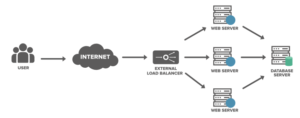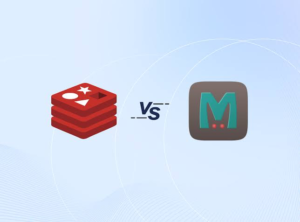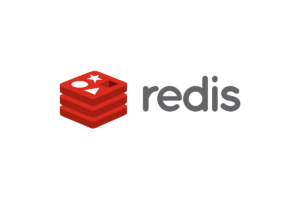
Introduction
SQL, which stands for Structured Query Language, is a programming language used to manage and manipulate relational databases. It allows you to create, retrieve, update, and delete data from databases, as well as define their structure and relationships. SQL is essential for working with data-driven applications and plays a crucial role in handling tasks like querying data, managing tables, and performing data analysis.
How to use SQL
Utilizing SQL, which stands for Structured Query Language, entails a sequence of steps to proficiently engage with databases and proficiently oversee data. Here’s a breakdown of the process:
Setting Up a Database
Begin by selecting a suitable database management system (DBMS), such as MySQL, PostgreSQL, or Microsoft SQL Server. Install the chosen DBMS and create a new database where your data will be stored. This lays the foundation for your data management tasks.
Creating Tables
With your database in place, use SQL’s Data Definition Language (DDL) to create tables. Define the structure of your tables by specifying columns, their data types, and any constraints or rules that apply to the data. Tables function as designated containers, facilitating the structured arrangement and storage of interconnected information.
Inserting Data
Once your tables are defined, use Data Manipulation Language (DML) commands like INSERT INTO to add data to the tables. You’ll provide values for each column as you insert new records. This step populates your database with meaningful information.
Querying Data
SQL’s core strength lies in its ability to query data. Utilize SELECT statements to retrieve specific information from your database. Apply conditions using WHERE clauses to filter results and obtain the data you need for analysis or presentation.
Updating and Deleting Data
Data isn’t static; you may need to modify or remove existing records. Use DML’s UPDATE command to modify data within a table, and employ DELETE FROM to remove unwanted records. These commands allow you to keep your data accurate and up to date.
Altering Tables
As your requirements evolve, you might need to make changes to your tables. DDL commands like ALTER TABLE enable you to add or remove columns, change data types, and adjust constraints without losing existing data.
Managing Permissions
Data Control Language (DCL) commands play a role in securing your data. Grant or revoke permissions to users or roles, controlling who can perform specific actions on the database. This step ensures data privacy and integrity.
Transaction Management
SQL supports transactions, which are sequences of one or more database operations treated as a single unit. Transaction Control Language (TCL) commands like COMMIT and ROLLBACK help maintain the consistency and reliability of your data, especially in multi-step processes.
Optimizing Queries
To enhance database performance, learn query optimization techniques. Indexing, proper database design, and writing efficient queries can significantly speed up data retrieval and manipulation.
Backup and Recovery
Regularly back up your database to prevent data loss due to hardware failures, accidents, or other unforeseen events. Have a solid recovery plan in place to restore your data to a consistent state if issues arise.
SQL offers a versatile and powerful way to manage data, making it essential for various roles, including developers, data analysts, and database administrators. As you gain experience, you can delve into more advanced SQL features and best practices to further enhance your database management skills.
History of SQL
SQL, or Structured Query Language, has a rich history closely tied to the development of relational database management systems (RDBMS). Here’s an overview of its evolution:
- 1970s: The concept of relational databases emerged in the 1970s. Dr. E.F. Codd, a researcher at IBM, introduced the idea of a relational model for databases in his paper “A Relational Model of Data for Large Shared Data Banks.” This laid the foundation for organizing data in tables with rows and columns, and for using a query language to interact with these databases.
- 1974: Donald D. Chamberlin and Raymond F. Boyce, also at IBM, developed the initial version of a query language called SEQUEL (Structured English Query Language) as part of the System R project. SEQUEL laid the groundwork for what would later become SQL.
- Late 1970s: IBM’s System R was the first prototype of a relational database system that used a query language similar to SEQUEL. The name was later changed to SQL due to trademark issues.
- 1981: The first commercial implementation of SQL was released by Relational Software Inc., later known as Oracle Corporation. This marked the beginning of SQL’s adoption in the business world.
- 1986: The American National Standards Institute (ANSI) recognized SQL as a standard and published the SQL-86 standard. This standardized SQL and made it more widely accessible.
- 1989: ANSI released SQL-89, which introduced several improvements and refinements to the language.
- 1992: SQL-92, also known as SQL2, brought further enhancements and established the foundation for modern SQL. It introduced features like outer joins, subqueries, and support for more complex data types.
- Late 1990s: As the internet gained popularity, web applications and e-commerce platforms started using SQL databases extensively to store and manage data.
- Early 2000s: Various database vendors developed their own extensions to SQL, leading to some fragmentation and inconsistencies in the language.
- 2003: The ANSI/ISO SQL standard was revised and became known as SQL:2003. This version introduced more advanced features and improved portability across different database systems.
- Subsequent Years: Subsequent revisions of the SQL standard, such as SQL:2008, SQL:2011, and SQL:2016, continued to enhance the language with new capabilities, including support for XML and JSON data, window functions, and more.
- Today: SQL remains a fundamental tool for working with relational databases, powering a wide range of applications, from small-scale projects to large enterprise systems. It has also influenced the development of NoSQL databases and other data-related technologies.
SQL’s history reflects its enduring importance in the field of data management and its evolution to accommodate the changing needs of the technology landscape.
Benefits of SQL
SQL is a common programming language used to manage and share data. While there are some drawbacks of SQL, such as a clunky interface and cost inefficiencies, the advantages tend to outweigh its disadvantages. SQL is extremely accessible across various platforms, and its user-friendliness can help anyone become an expert.
- Data Management: SQL provides a structured way to create, modify, and manage databases, making it easy to organize and store data efficiently.
- Data Retrieval: With SQL, you can retrieve specific data using queries, enabling you to extract relevant information from large datasets quickly.
- Data Manipulation: SQL’s Data Manipulation Language (DML) commands allow you to insert, update, and delete data, maintaining data accuracy and consistency.
- Data Analysis: SQL enables you to perform complex data analysis, aggregations, and calculations, facilitating informed decision-making.
- Flexibility: SQL is vendor-agnostic and widely supported, giving you the flexibility to switch between different database systems without rewriting code.
- Data Integrity: SQL enforces constraints and rules on data, ensuring data integrity and preventing invalid or inconsistent entries.
- Transaction Control: SQL supports transactions, allowing you to group multiple database operations into atomic units for better data integrity.
- Security: SQL’s Data Control Language (DCL) commands let you manage access permissions, ensuring data security and privacy.
- Scalability: SQL databases can handle large amounts of data and are scalable to accommodate growing needs.
- Standardization: SQL is an ANSI/ISO standard, providing a consistent syntax and structure across different database platforms.
- Reporting and Visualization: SQL queries can be used to generate reports and visualize data, aiding in data exploration and presentation.
- Integration: SQL databases can integrate with various programming languages and tools, enabling seamless interaction with applications.
- Historical Data: SQL databases can store historical data and provide data versioning, useful for tracking changes over time.
- Backup and Recovery: SQL databases allow you to create backups and implement recovery strategies to prevent data loss.
- Maintenance: SQL databases offer tools for indexing, optimizing queries, and managing performance, enhancing database efficiency.
- Support for Complex Operations: SQL supports subqueries, joins, and advanced functions, allowing you to perform complex operations on data.
- Structured Querying: SQL’s declarative nature lets you focus on what you want to retrieve or manipulate, rather than how to do it.
- Data Warehousing: SQL is used in data warehousing to aggregate and analyze data from multiple sources, supporting business intelligence.
Overall, SQL empowers individuals and organizations to effectively manage, analyze, and utilize their data, making it an indispensable tool in today’s data-driven world.
Conclusion
In conclusion, SQL (Structured Query Language) stands as a cornerstone of modern data management and manipulation. Its evolution from a theoretical concept in the 1970s to a standardized and versatile language today has transformed how we interact with databases. SQL’s benefits encompass data organization, retrieval, manipulation, and analysis, offering a robust framework for tasks ranging from simple data retrieval to complex business intelligence.
With SQL, users can seamlessly create and modify databases, ensuring data integrity and security through well-defined rules and permissions. Its ability to handle transactions guarantees consistency and reliability, while its scalability accommodates data growth. SQL’s standardized syntax fosters portability across diverse database systems, reducing vendor lock-in and encouraging interoperability.
Furthermore, SQL’s querying capabilities empower users to glean meaningful insights from vast datasets, enabling informed decision-making. Its support for complex operations, reporting, and visualization streamlines data analysis processes, while its integration with programming languages facilitates dynamic interaction with applications.
As technology continues to advance, SQL remains a foundational tool for those navigating the intricate landscape of data management. Whether in the hands of developers, analysts, or administrators, SQL’s enduring significance is a testament to its efficiency, flexibility, and vital role in driving innovation and understanding through data.




[…] the world of databases, two prominent paradigms emerge: SQL (Structured Query Language) databases and NoSQL (Not Only SQL) databases. Each paradigm addresses different data storage and […]